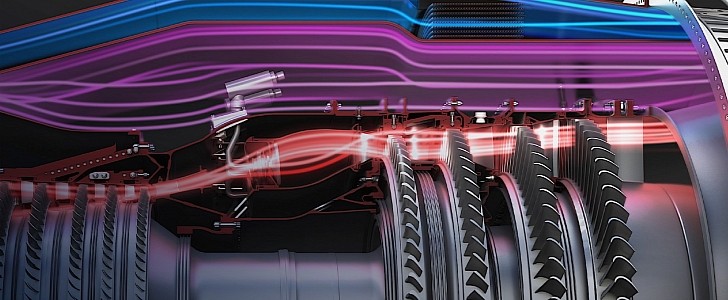Back in late 2020, American defense contractor GE announced the arrival of something it referred to as the “world’s first-ever flight-weight, three-stream adaptive cycle engine.” The unit, which is supposed to power future iterations of the Lockheed Martin F-35 Lightning, but also the upcoming Next Generation Air Dominance fighter, is called XA100, and at the end of last month entered a new stage of its development program.
The first XA100 started testing in December 2020 (Phase 1), and a second one came into the spotlight in the fall of 2021. Until now, the powerplants have been put through their paces at a facility in Evendale, Ohio, but as of now, the Air Force’s Arnold Engineering Development Complex (AEDC) in Tennessee is where all the magic will happen (Phase 2).
The exact specs of this new adaptive cycle engine are not known, but its maker does advertise it as one that can work in both high-thrust mode for maximum power when the mission demands it, but also in high-efficiency mode when the need to save fuel arises.
Made with ceramic matrix composites (CMC), polymer matrix composites (PMC), and additive manufacturing, the XA100 will fit into two variants of the Lightning, namely the F-35A and F-35C, “without any structural modifications to either airframe.”
When ready and deployed on these platforms (unclear when that will be), the engine should provide them with better acceleration, range, and cooling.
“The XA100 simultaneously provides transformational improvements in fuel efficiency, thrust, power, and thermal management that simply cannot be matched by legacy propulsion systems,” said in a statement at the end of last month David Tweedie, GE Edison Works’ general manager for Advanced Combat Engines.
“These improvements will help ensure the F-35 remains a preeminent fighter platform not just in the near-term, but for decades into the future, and will enable lower operational and sustainment costs for the services.”
The exact specs of this new adaptive cycle engine are not known, but its maker does advertise it as one that can work in both high-thrust mode for maximum power when the mission demands it, but also in high-efficiency mode when the need to save fuel arises.
Made with ceramic matrix composites (CMC), polymer matrix composites (PMC), and additive manufacturing, the XA100 will fit into two variants of the Lightning, namely the F-35A and F-35C, “without any structural modifications to either airframe.”
When ready and deployed on these platforms (unclear when that will be), the engine should provide them with better acceleration, range, and cooling.
“The XA100 simultaneously provides transformational improvements in fuel efficiency, thrust, power, and thermal management that simply cannot be matched by legacy propulsion systems,” said in a statement at the end of last month David Tweedie, GE Edison Works’ general manager for Advanced Combat Engines.
“These improvements will help ensure the F-35 remains a preeminent fighter platform not just in the near-term, but for decades into the future, and will enable lower operational and sustainment costs for the services.”






